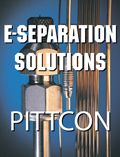Ask the Editor: Ion Exchange
When is it acceptable to use a strong anion exchange HPLC column in place of a weak anion exchange column? Is it ever acceptable?
An LCGC reader recently submitted the following question:
When is it acceptable to use a strong anion exchange HPLC column in place of a weak anion exchange column? Is it ever acceptable?
The following answer was provided by Tom Jupille, president of LC Resources, Inc. (Walnut Creek, California).
The short answer: If you can demonstrate that it works, then it's acceptable . . . but don't hold your breath; you're unlikely to make it work without modifying other parameters such as pH, ionic strength, or mobile phase salt type.The longer answer: the terms "strong" and "weak" refer to the pKa of an ion exchanger, just as they do to any acid or base. A strong exchanger has a very low (acid) or high (base) pKa, and is therefore completely ionized at any reasonable intermediate pH. Examples would be sulfonate ("S") cation exchangers or quaternary ammonium ("Q") anion exchangers. A weak exchanger has an intermediate pKa; the degree of ionization varies over a 3-4 pH unit range around the pKa. Examples would be carboxymethyl (CM) cation exchangers or diethlyaminoethyl (DEAE) anion exchangers."Strong" and "weak" are often confused with "high capacity" and "low capacity." The capacity of an ion exchanger is the amount of charge per unit volume of column packing. It is quite possible to have a low-capacity strong exchanger or a high-capacity weak exchanger. The difference is that the capacity of a weak exchanger can be pH-dependent.If the operating pH of the method is near the pKa of a weak exchanger, then the chances of matching the ion exchange capacity in a strong exchanger range from slim to none. Even if you do match the capacity, secondary factors such as substrate chemistry, charge density of the ligand, and so forth come into play and make an exact match extremely difficult (in fairness, those same factors would apply even when substituting another weak exchanger).
Questions?
LCGC technical editor Steve Brown will answer your technical questions. Each month, one question will be selected to appear in this space, so we welcome your submissions. Please send all questions to the attention of "Ask the Editor" at lcgcedit@lcgcmag.com We look forward to hearing from you.
Best of the Week: Food Analysis, Chemical Migration in Plastic Bottles, STEM Researcher of the Year
December 20th 2024Top articles published this week include the launch of our “From Lab to Table” content series, a Q&A interview about using liquid chromatography–high-resolution mass spectrometry (LC–HRMS) to assess chemical hazards in plastic bottles, and a piece recognizing Brett Paull for being named Tasmanian STEM Researcher of the Year.
Using LC-MS/MS to Measure Testosterone in Dried Blood Spots
December 19th 2024Testosterone measurements are typically performed using serum or plasma, but this presents several logistical challenges, especially for sample collection, storage, and transport. In a recently published article, Yehudah Gruenstein of the University of Miami explored key insights gained from dried blood spot assay validation for testosterone measurement.
Determination of Pharmaceuticals by Capillary HPLC-MS/MS (Dec 2024)
December 19th 2024This application note demonstrates the use of a compact portable capillary liquid chromatograph, the Axcend Focus LC, coupled to an Agilent Ultivo triple quadrupole mass spectrometer for quantitative analysis of pharmaceutical drugs in model aqueous samples.
